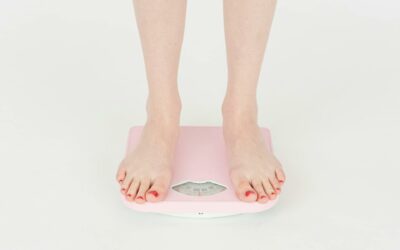Body composition, or the proportion of fat, muscle and bone within the body, is a significant factor in overall health. There are several ways to measure and analyze body composition, but turns out, not all methods are created equally. Read more to learn how the DEXA scan stands out as the gold standard in body composition testing.
Understanding what lies beneath the skin has been a source of fascination for centuries. From the first exploration of anatomy, to modern day, high-powered MRI technology, scientists have had an interest in exploring the intricacies of the human body past what the eye can see. The proportion of tissue in the body (muscle, fat, bone) can say a lot about the body’s overall health, but measuring this accurately has been an ongoing experiment in both methodology and technology alike.
First of all, ditch the scale
First off, it’s important to understand the limitations of traditional scales in determining body composition. Stepping foot on a scale that only measures mass does not provide a breakdown of what a measurement of mass consists of. For instance, a person who weighs 180lbs could have 80lbs of fat mass and 100lbs of muscle, bone, and other tissue. Or, they could have 20lbs of fat mass and 160lbs of muscle, bone and other tissues. In the case of a higher fat percentage, this could put a person at a higher risk for chronic health conditions than a person with lower overall fat mass. Simply put, there is no way to gain a full picture of body composition by using a one-number approach through a tyical scale. Measuring body composition, or the proportion of fat, muscle, and bone, is a more accurate way to gain a full picture what the body is comprised of, and can be the first step in assessing overall health.
Measuring body composition has come far over the past few decades. Early on, calipers were used (and still are, in some cases) to measure body fat through the “pinch method.” Methods like hydrostatic testing using the water displacement theory were also relied on to determine fat and muscle mass differences. Soon after, more modern devices like the BodPod (which uses air displacement) and InBody machines (which use bioelectrical impedance analysis) were designed for a more accurate assessment of body composition.
In the 1980s, DXA technology, (dual-energy X-ray absorptiometry) was introduced as a way to measure bone density, but was later applied to analyze body composition. DXA technology uses two X-ray beams with different energies and projects them onto a patient’s body through a full-body scanning device (a DEXA scan) to provide a complete picture of fat and muscle mass distribution throughout the body. While several aforementioned methods measure body composition, a DEXA scan differs in a few major ways.
Preparation
Unlike many body composition tests, there is no need for much preparation before a DEXA scan. Most body composition testing methods come with a few inconvenient steps, for instance, removal of clothing, limiting eating or drinking prior to a test, expelling all air in the lungs and holding the breath, or even complete submergence underwater. During a DEXA scan, any type of clothing can we worn, and the subject can eat or drink normally before a scan. After laying comfortably on a flat-bed device for under 10 minutes, a full report is generated with more data points on detailed, regional body composition and overall health than can be produced by any other method of testing.
Accuracy
A DEXA scan has a very low error rate of 1-2%, compared to 5-15% for most methods. This is due to the advanced X-ray technology that leaves little guesswork and no extra calculations that may be impacted by human error.
Regional Analysis
Most methods of body composition testing only provide a reading of total body fat and lean mass. DEXA offers a comprehensive regional analysis across all major areas of the body, like the arms, legs, and abdomen, which gives clients more specific information on their fat and lean mass distribution. This can help point out muscle imbalances and inform physical training interventions, if needed.
Bone Density & Visceral Fat Measurement
A main piece of information that is missing from most testing methods is the ability to measure bone mineral content, or bone density. During a DEXA scan, however, soft tissue absorption is subtracted from full-body tissue absorption to estimate a measurement of bone density. Access to bone density information is crucial in catching any potential risk of osteoporosis (especially in older populations), should a scan indicate lower than average bone mineral content.
A DEXA scan can also measure visceral fat, or the fat around the internal organs. This is particularly important in assessing risk of chronic disease such as cardiovascular disease, diabetes and cancers. Access to this type of information brings even more value to a DEXA scan than just body fat and lean mass measurements – it can be the difference in intervening with potentially lifesaving lifestyle behavior changes. DEXA scans are also able to track changes over time to determine whether or not a nutrition and fitness plan is creating change in fat or muscle proportion. It also pairs well with Resting Metabolic Rate test to assess how many calories are needed to be consumed per day to shift body composition over time.
A scale that simply measures mass does not provide a full scope of health, while other methods of body composition testing that use a physics-based approach may often lead to less accurate results. All in all, a DEXA scan is the gold-standard in body composition testing, offering a complete picture of fat and muscle mass with regional analysis, bone density measurements, and visceral fat assessment: factors that traditional testing do not provide.
Interested in understanding more about your body composition? Schedule a DEXA scan at a location near you!



